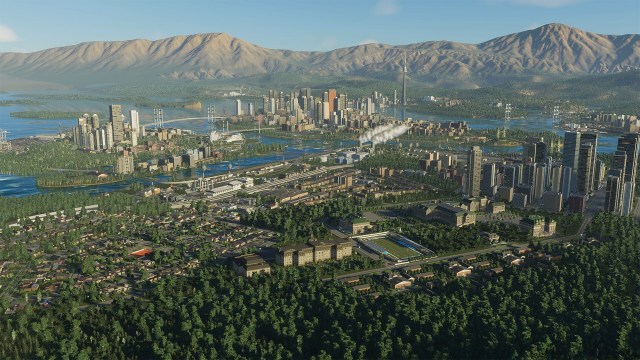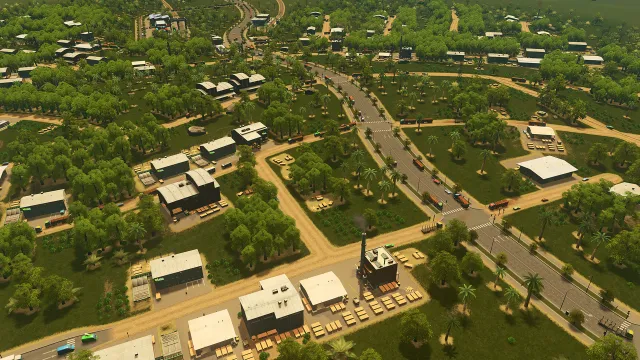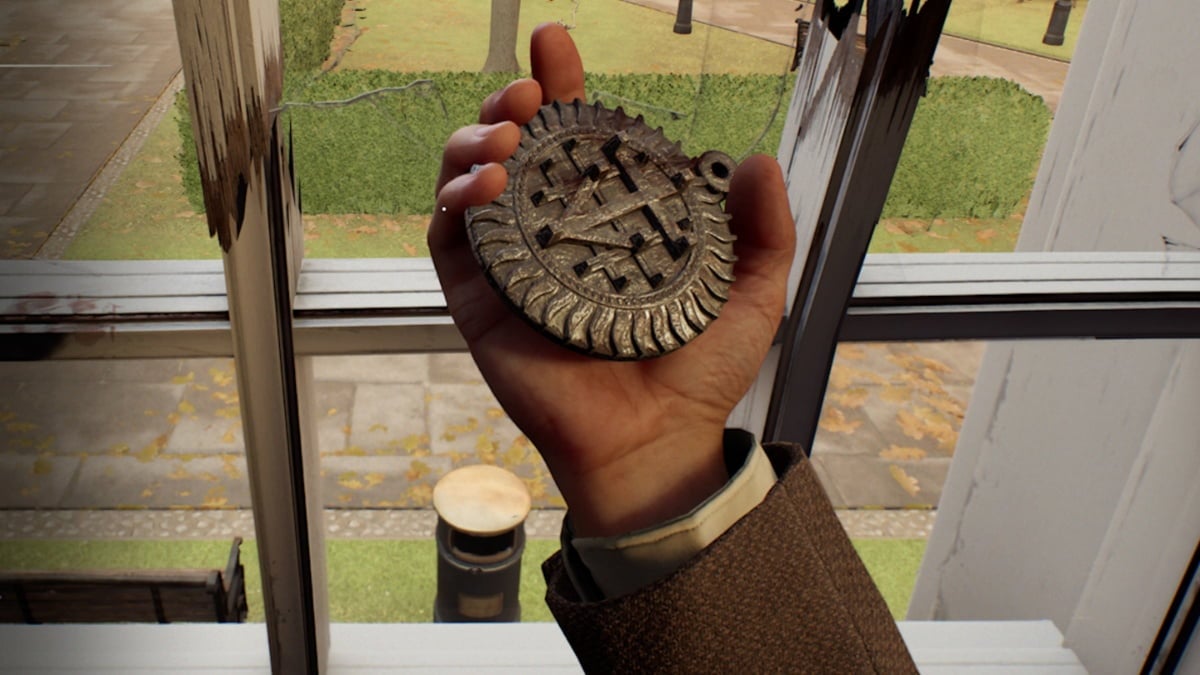No one likes high rents in their city, especially in Cities: Skylines 2. Cims will start to move out for this reason, resulting in lots of lost income that can quickly lead to the downfall of your economy.
To keep both sides happy, we’ve written a guide on how to keep the high rent issue under control in Cities Skylines 2.
How to reduce high rent in Cities Skylines 2

If your goal is to reduce high rents plaguing your city in Cities Skylines 2, you need to fix the external factors that are likely responsible for rent increasing. Some of the reasons for high rent can be:
- Rise in land value
- Too many low-density zones
- High taxes
- Several unnecessary upscale buildings
- Low average education levels
- Low skill levels of Cims
Below, we will talk about the main ways to fix the high rent issue in Cities Skylines 2.
Reduce taxes
When you lower the tax rate of residential areas, it applies to both low and high-density buildings. This reduces the rent, making the building more affordable. It’s a great option if you cannot afford to construct more buildings and need to lower rents quickly. If you don’t have the funds to accommodate Cims by simply constructing more buildings, reducing taxes is a good place to start if you’re aiming to reduce rent.
Having said that, be advised that moving the slider all the way to the left will have an adverse effect on your earnings. You will not make the same kind of money you used to. However, the benefit of doing so is that people and businesses will be able to pay their rent on time.
Therefore, make sure you only target low-income housing and similar businesses. Remember that setting the taxation too low means you’ll lose out on lots of money and likely end up in debt, so be careful.
Mix low-density and high-density buildings together
You are not required to designate an entire zone for low-density housing. You can select specific regions of an area by using the Tool Mode when choosing zones. This allows you to combine low-density zones with high-density structures.
The rent of a property will also vary depending on the type of services available in the area. You can view the land value by clicking on the Land Value icon. White areas have a lower value, while dark blue areas have a higher value. To open this view, click on the green rectangle with a cent sign.
A mix of housing types can help meet the diverse needs of residents. Low-density buildings are ideal for families, while high-density buildings can accommodate more people. Providing adequate housing will reduce the demand for new construction, which will in turn lead to lower rent costs.
Reduce the value of land
While this method may seem counterintuitive, reducing the value of land can help to keep rent costs low. Land becomes more valuable when there are several public services around, like hospitals, parks, and police stations, and quickly becomes unaffordable for most Cims, making housing a distant dream.
To reduce the cost of living, you can demolish those structures—especially ones that don’t seem to be completely necessary—and build more housing or leave them unoccupied, while rebuilding the demolished structures elsewhere. It will slowly reduce the land value, which lowers rent as well. You can view the value of specific areas of land by selecting the information (i) icon in the top left, and then the green box with white lettering.
Be careful when deliberately reducing your land value, however, as the loss of a public service has consequences—a major one being that residents will leave their homes and potential new residents may find housing elsewhere, losing you money in the long run.
Improve education quality
The quality of education a Cim receives is directly proportional to the amount of money they earn from their jobs. If Cims don’t have a good education, building structures such as a college or a university will increase their income. A higher income can help people afford high rents and silence complaints.
We recommend you increase the level of education in your city as soon as possible. To raise the collective income of your Cims, all you have to do is place colleges and universities in the affected areas of your city.
This is, however, easier said than done, as raising the education levels in your city is a slower and more expensive option to lower rents, which should only be pursued if you have a lot of money.
Bulldoze high-rent buildings
If all other options are unfeasible, you can manually demolish high-rent buildings by bulldozing them. This will quickly remove the problem and the alert. That said, the downside is that it will force people to find new housing, and it could make the problem worse if you don’t plan carefully. This option should only be a failsafe if you need to get rid of the problem for the time being.
While it may seem like a quick fix to high rent issues, there are actually no fast solutions to the problem. Demolishing a high-rent building does not solve the issue; it merely delays it. More reliable methods of lowering rent include improving education, lowering land values, and diversifying housing options.
All these strategies should only be implemented after you have a plan to compensate for the loss, so that you can recover quickly or pursue another plan of action.
How does rent work in Cities Skylines 2?

If you’ve read through all these solutions to high rent but are still confused about rent’s role in your job as a city planner in Cities Skylines 2, let us explain it to you.
Rent is affected by a number of factors, including land value and building height, zoning, education level, and overall wealth (income). Higher land values lead to higher mortgages, as taller buildings require more upkeep.
Rents vary depending on the type of zone, such as low-density or medium-density. Cims’ job opportunities are determined by their education level, and wealth is calculated by household income or production income.
Land value
By clicking on the Land Value icon (the green rectangle with a white cent sign) in the information panel on the left side of the screen, you can view the land value, which is the overall price per land cell across your city. It is affected by services and building level, where:
- White areas are low in value.
- Dark blue areas are high in value.
- There are several color variations in between.
- The average cost per cell is visible in the top right of the menu.
Cim education levels
Cims’ education level determines the kind of jobs they are qualified for, which in turn affects their career path. Cims with little or no education are more likely to be poorer than those with higher levels of education.
Providing a variety of housing options, such as high-density low-income housing and medium-density apartment blocks, makes it easier for them to find affordable housing. You can view this by clicking on a house, then the Cim silhouette on the left-hand side, and looking under the Citizen section.
Building levels
To see the level of a building, click on it and look at the bar in the upper part of the pop-up menu. It will show you a number from one to five. Lower levels require less maintenance and have lower rent as a result. The opposite is true for higher levels, which require more money from the Cim or business. You can see this by clicking on the house and checking in the Household Information section.
Household wealth and production Income
Household wealth, in particular, can be one of the most difficult mechanics in Cities: Skylines 2 to master due to its unpredictability. A single adult with a child in elementary school may be poor and struggle to pay high rent in a low-density single-family home. However, three adults living in the same house may be poor but can afford rent by splitting the payments. You can keep track of this in the same panel as Education.
Additionally, businesses may experience a lack of customers or be unable to obtain the resources they need to produce goods. You can see how efficient a business is by clicking on the building and looking at the numbers at the top of the pop-up window.
Zone type
While the depth available to players in the new zoning system in Cities Skylines 2 is a welcome addition to the game, it is also complex and requires a lot of attention. In general, high rent is a bottom-up phenomenon. Low-density areas have higher rent than medium-density areas, which have higher rent than high-density areas.
In apartment complexes, multiple families and tenants share the costs of maintaining the building, while single-family homeowners pay for the upkeep of their own homes.






Published: Oct 28, 2023 10:12 am